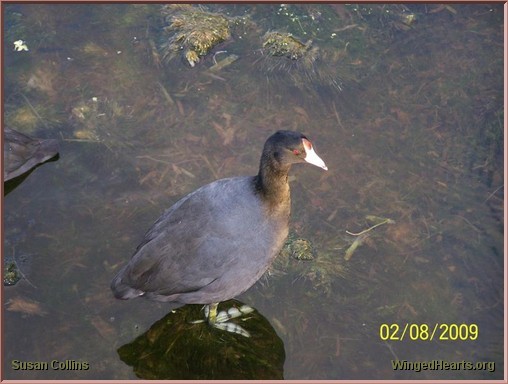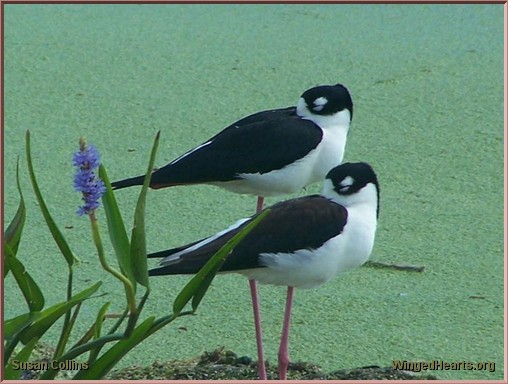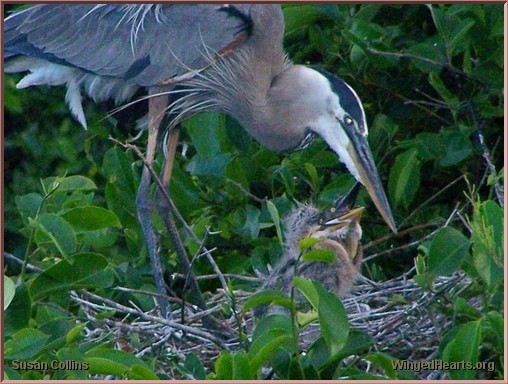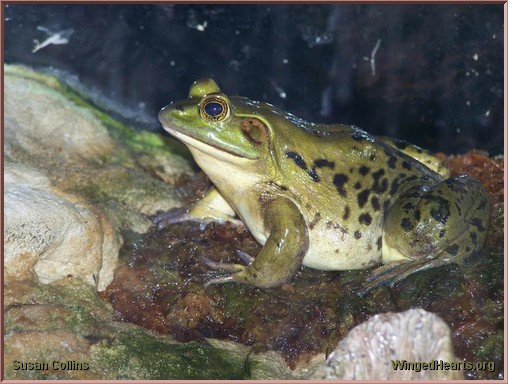Green Cay Nature Center - Wetlands - Part 1
Photos by Susan Collins
Susan loves visiting the Green Cay Nature Center which is one of the newest nature centers in Palm Beach County and overlooks 100 acres of constructed wetlands. The wetlands include emergent marshes, deep zones, alligator holes, cypress swamps and Seminole Chickee huts. The 1.5 mile elevated boardwalk takes the visitor through journey through a typical Florida wetland providing a great opportunity to learn about wildlife that live there.
Susan, who is also a regular reader of Wild Bird Talking ezine has taken many magnificent shots of the birds that live in the wetlands and we are delighted to feature some them below.

An American Coot (above) ponders on the reflections in the water
Coots are well known for their "show and tell" ways where they use their body postures, white undertail coverts, the degree to which they arch their wings their backs as well as the angle of their neck feathers to communicate their intentions. While these displays are often used to intimidate intruders, that is not their sole purpose. Coots also use them to issue warning signals from predators like hawks or dangers like planes. A healthy Coot populations symbolises healthy marshlands and places where the coot population is in decline indicates that many more vulnerable species are also endangered as their habitats rapidly disappear.

A pair of Black-necked Stilts caught basking in the sunshine
Susan calls them Nite-nite Stilts as she caught them napping. American Stilts can be easily distinguished from the European Stilt by the white spot above its eye. Proportionally the Stilts legs are much longer their bodies than all other species except the flamingo. The stilts are noisy and gregarious and can get quite aggressive during breeding season like many other species. Stilts live in hot weather and can make over 100 trips carrying water in their ventral feathers to the nest to cool it down. The female Stilt is often slightly browner in her back than her male partner.

Great Blue Heron feeding her chicks - this was taken at Wakodahatchee (a sister site a few miles from Green Cay).
Wakodahatchee wetlands (meaning 'created water' in Seminole Indian Language) is located at Delray Beach. 50 acres of unused utilities land has been turned into a wetland ecosystem where 140 species of birds have made their home. the wetlands were designed to provide open water (for waterfowls and diving birds), emergent marsh areas for moorhens and rails; island with shrubs for roosting, basking and nesting; shallow shelves for herons and egrets. The forest wetland areas have been created with the aim to develop a long-term habitat.

A pig frog enjoying a quiet moment.
Pig frogs, popularly know as bullfrogs are nocturnal and difficult to approach. They are hunted for their legs and are wary of humans, though they can be very friendly when not threatened. Most pig frogs love floating on the leaves of water hyacinths or sedges and like feeding on crayfish.

 del.icio.us
del.icio.us Digg
Digg Facebook
Facebook Google
Google Google+
Google+ LinkedIn
LinkedIn MySpace
MySpace Ping This!
Ping This! SlashDot
SlashDot StumbleUpon
StumbleUpon Twitter
Twitter Yahoo
Yahoo



